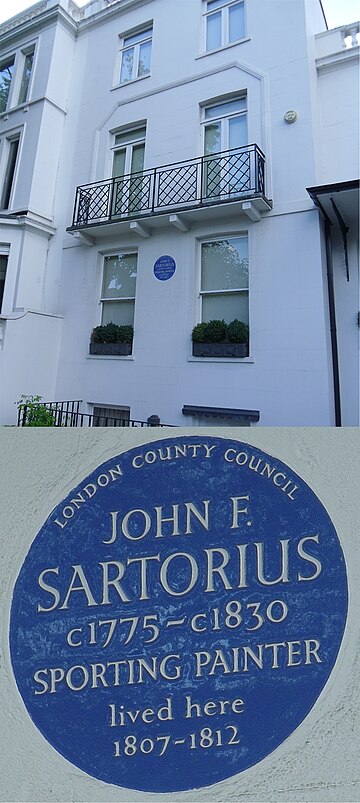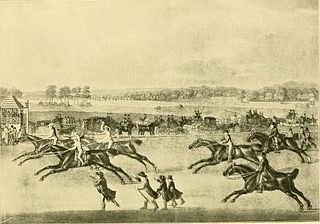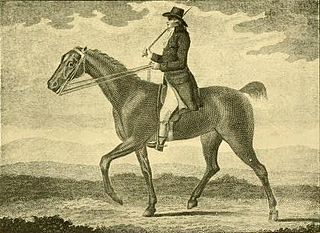
Joseph Mallord William Turner, known as J. M. W. Turner and contemporarily as William Turner, was an English Romantic painter, printmaker and watercolourist. He is known for his expressive colourisations, imaginative landscapes and turbulent, often violent marine paintings.

Sawrey Gilpin was an English animal painter, illustrator, and etcher who specialised in paintings of horses and dogs. He was made a Royal Academician.

Sir Peter Francis Lewis Bourgeois RA was a British landscape and history painter, and court painter to king George III of the United Kingdom. In the late 18th century he became an art dealer and collector in association with Frenchman Noël Desenfans. The pair were commissioned by Polish king Stanisław August Poniatowski to compile a collection of paintings, which they spent five years doing, but Stanisław's exile in 1795 meant the contract could not be completed and they were left with a large collection of paintings. Bourgeois outlived Desenfans and bequeathed the art to Dulwich College with an additional £2000 to build a permanent building to house it. This became the Dulwich Picture Gallery, England's first purpose-built public art gallery.
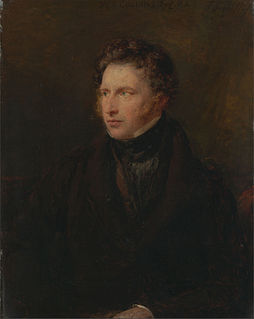
William Collins was an English landscape and genre painter. His sentimental paintings of poor people enjoying nature became a posthumous high fashion, notably in the 1870s when his market price rose higher than Constable and stayed so until 1894. Turner, his model, far exceeded him in value. (
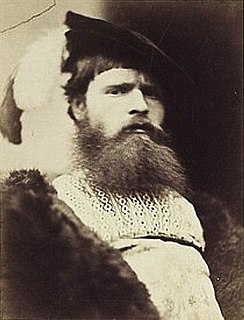
William Frederick Yeames was a British painter best known for his oil-on-canvas problem picture "And When Did You Last See Your Father?", which depicts the son of a Royalist being questioned by Parliamentarians during the English Civil War.
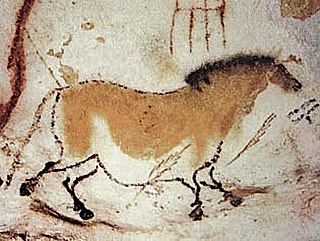
Horses have appeared in works of art throughout history, frequently as depictions of the horse in battle. The horse appears less frequently in modern art partly because the horse is no longer significant either as a mode of transportation or as an implement of war. Most modern representations are of famous contemporary horses, artwork associated with horse racing, or artwork associated with the historic cowboy or Native American tradition of the American west. In the United Kingdom depictions of fox hunting and nostalgic rural scenes involving horses continue to be made.
Joseph William Allen was an English landscape painter and art teacher, who was also active in the founding of the Society of British Artists.
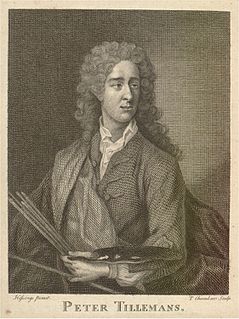
Peter Tillemans was a Flemish painter, best known for his works on sporting and topographical subjects. Alongside John Wootton and James Seymour, he was one of the founders of the English school of sporting painting.

John E. Ferneley, was an English painter who specialised in portraying sporting horses and hunting scenes. Although his rendition of horses was stylised, he is regarded as one of the great British equine artists, second perhaps only to George Stubbs.

Not to be confused with the painter Charles Towne (1781–1854), "the younger".
James Barenger was an English animal painter and illustrator.

Henry Barraud was an English portrait, subject and animal painter.

William Barraud was an English animal painter and illustrator, the brother of Henry Barraud, with whom he collaborated on many works.
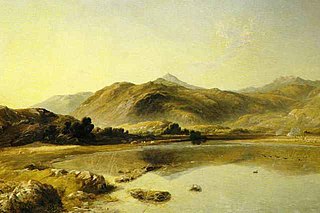
Thomas Danby was an English landscape painter.

John Sartorius was an Anglo-German animal painter, the first of four generations of the celebrated Sartorius family of artists. He should not be confused with his great-grandson John Francis Sartorius.

James Hayllar (1829–1920) was an English genre, portrait and landscape painter.

Arthur James Stark was an English painter and a member of the Norwich School of painters.
